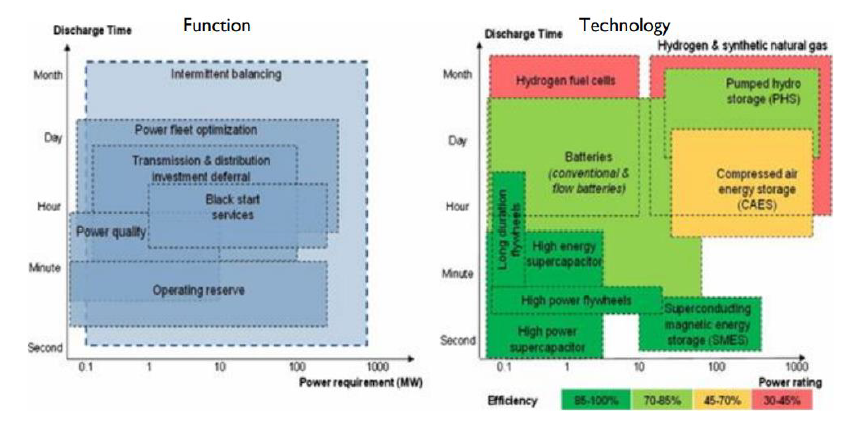Battery Energy Storage
BATTERY ENERGY STORAGE SYSTEM
Although the focus of this Report for the 40Mw Magarini Solar Park is on batteries, BESS is not the only technology that can provide energy storage, some of which have long been part of power systems and familiar to economists:
• Conventional storage hydro (other than pure run-of-river projects). No other energy storage technology for the electric sector has the potential for monthly and seasonal time scales.
• Pumped hydroelectric storage (PHS)
• Thermal storage as used in concentrated solar power (CSP) projects.
• Flywheels
• Compressed air energy storage (CAES), including adiabatic-CAES that does not
require fossil fuel (early stage)
• Hydrogen storage (still at a nascent stage globally, in part due to significant new infrastructure requirements)
Hybrid energy storage systems may also be possible, such as those that combine with BESS with different chemistries, or even different technologies e.g. a hybrid BESS and flywheel system to serve both energy management and power applications.
Energy storage technologies span a wide range of time scales and requirements for flexible operation. This means some energy storage technologies are better suited to provide certain services than others. Figure below shows the relationship between application, power size, duration and different energy storage technologies. BESS is becoming increasingly attractive – in part – because its modular nature means that it can be deployed across a wide range of sizes for power (a few kW or less to 100MW or more) and energy (from minutes to hours, or more). The choice of battery technology and electrochemistry will unlikely fall on the project economist, but on the technical specialist.

One of the main traditional roles of utility scale energy storage systems is to absorb energy during periods of low prices (low economic value) in order to release it back to the electricity system in times of scarcity or high prices (higher economic value) – in other words to time shift the use of energy and provide firm capacity to meet the objective of minimizing overall system cost for some stated level of reliability. Until the recent dramatic cost reductions in battery energy storage based
on lithium chemistries (of over 80% over the last decade]), two technologies provided this ability at grid scale. The first is conventional storage hydro with reservoirs to permit daily peaking, monthly or even annual balancing. The second is pumped hydroelectric storage (PHS), which may also have significant energy storage, with durations of 20 hours or more not being uncommon. Hydro and PHS projects can also meet other objectives such as grid reliability though the provision of ancillary services, that include frequency regulation, operating reserves (spinning and non-spinning), reactive power and voltage support, inertial response, and black start capability
Over the past decade there has emerged another potential role for energy storage, namely the integration of variable renewable energy (VRE) whose deployment has been driven by the need to reduce global carbon emissions, and the dramatic cost reductions in some renewable technologies, especially solar PV and wind
The potential for BESS to facilitate integration of VRE is illustrated in Figure 2, which depicts a thermal system with high penetration of solar PV. If some part of the solar output could be stored by a BESS two beneficial consequences follow (as shown in the figure): one avoids the curtailment during peak solar output hours (when the thermal load can be reduced no further), and one avoids loss of load (or the investment associated with adding additional thermal units to provide peaking
power for a few hours in the eveningl
